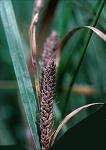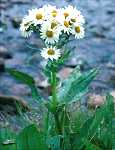 | Caithness.Org | Community | Business | Entertainment | Caithness... | Tourist Info | Site Map |
• Advertising • Chat Room • Contact Us • Kids Links • Links • Messageboard • News - Local & Scottish • News - UK & News Links • About / Contact Us • Submissions |
• Bookshop • Business Index & News • Jobs • Property For Sale • Property For Rent • Shop • Sutherland Business Index |
• Fishing • Fun Stuff • George, The Saga • Horses • Local Galas • Music • Pub Guide • Sport Index • What's On In Caithness |
• General Information • B & Bs • Backpackers • Caravan & Camping • Ferries • Getting Here • Holiday Letting • Hotels • Orkney • Pentland Firth • Sutherland • Taxis |
| N E W S F E E D S >>> |
NATURE AND ENVIRONMENT
Caithness County Flower To Celebrate The Queen's Golden Jubilee
|
13 March 03 County Flower - Final Two In 2002 Plantlife ran a campaign to get a county flower for each county. In 2003 they have narrowed it down to two for each county. You have until 31 October to make your choice for Caithness or any other county. Head Over To Plantlife The choice is between Scottish primrose and Bog asphodel A County Flower As part of the celebrations of the Golden Jubilee, the plant conservation charity Plantlife is setting out to encourage each county in the UK to adopt its own wild flower emblem. I suggest that Caithness takes part in this project and selects a flower that is worthy of the county. Flowers vary from the showy and attractive ones to the much duller green ones in grasses and the peculiar and specialised ones in sedges and conifer trees. But they all count as flowers. We might elect to choose a rare and little known plant or one more common, easily seen and readily recognised. There doesn't seem much point in choosing a plant that you cannot go to and allow visitors to admire, so accessibility is a point to bear in mind. Here are some suggestions:
Round-leaved Sundew Drosera rotundifolia. The huge areas of peatland in Caithness and North Sutherland are of international importance because of the world scarcity of this type of place. Sundews live on the peat, the round-leaved being the most common, recognisable and accessible of the three species.
Plantlife has set up a special section of its website www.plantlife.org.uk where members of the public can cast a vote for their choice. If you vote for a choice in your own county it counts as two votes, while you can also vote for a choice in another county, which counts as one vote. Plantlife will make a final choice based on the votes cast and any other relevant points. So please take part! Me? I am going to vote for the Eyebright. Ken Butler Ken Butler is the Botanical Recorder for Caithness - that is he holds and maintains all the information about wild plants and their distribution, on behalf of the Botanical Society of the British Isles.
See Also |





 Oyster Plant
Oyster Plant 
 The Wick Sedge or Estuarine Sedge
The Wick Sedge or Estuarine Sedge
 Magellan Daisy
Magellan Daisy 





